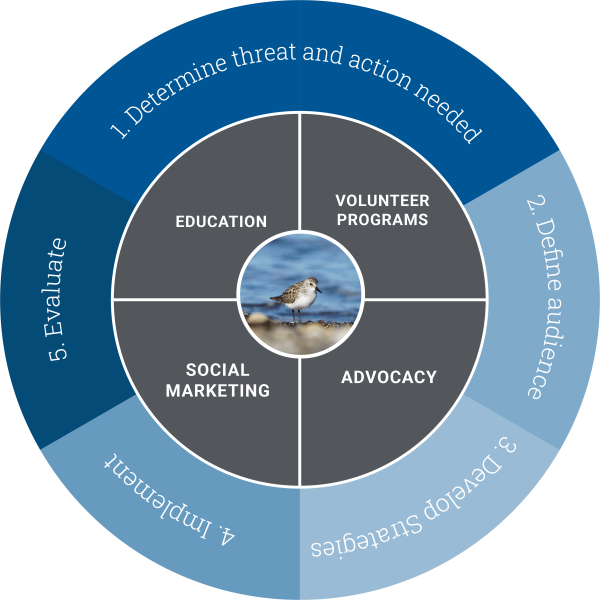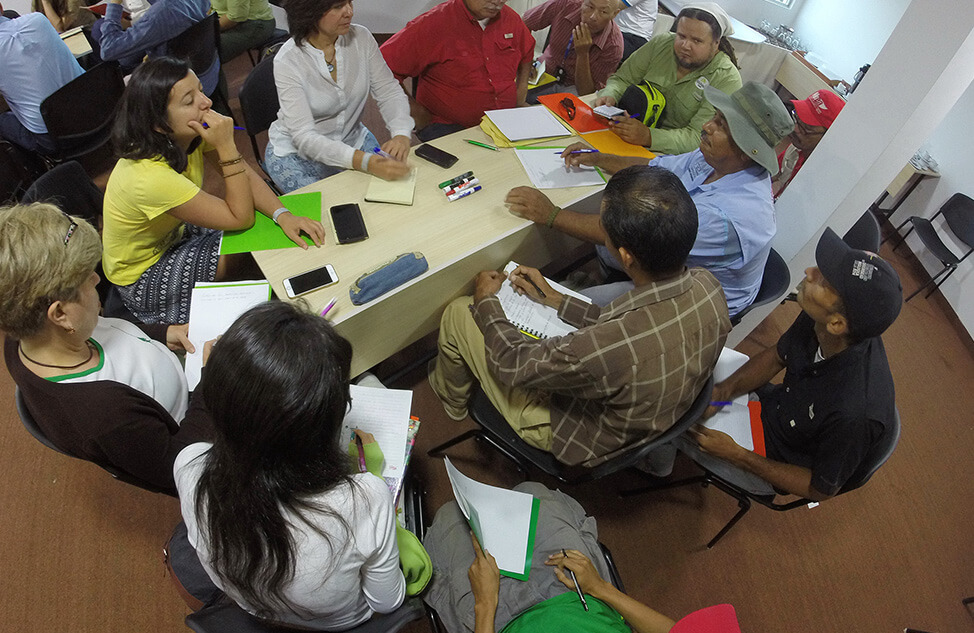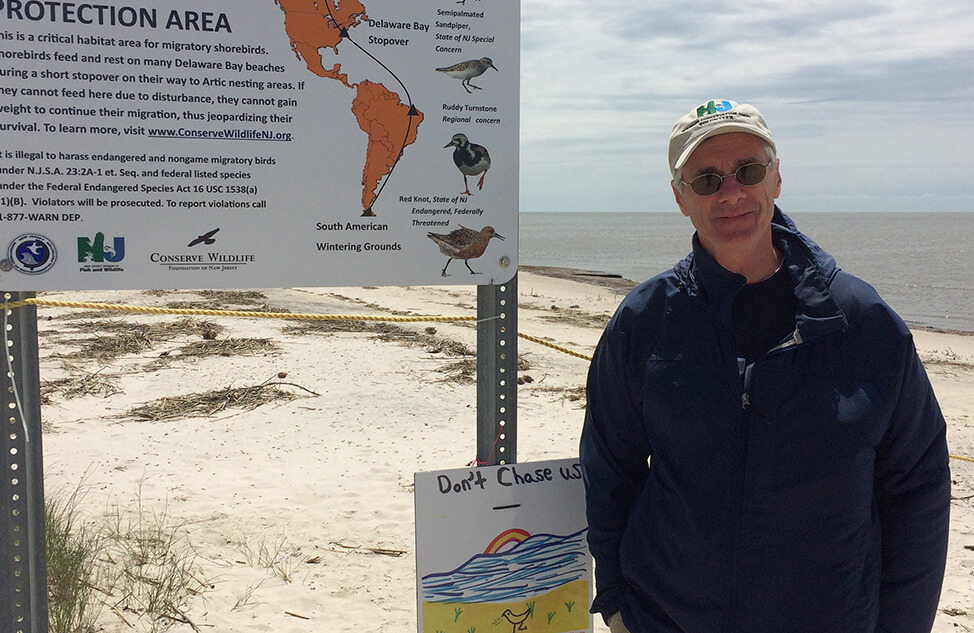The WHSRN Executive Office is launching a new toolkit to help partners select, design, implement, and evaluate strategies for the human dimension challenges of shorebird conservation at sites throughout the Americas.
Understanding the human dimensions of wildlife conservation—how people’s behaviors, knowledge, and values affect or are affected by conservation decisions—is a critical part of implementing habitat management for shorebirds. Addressing threats to shorebirds and their habitat is rooted in collaboration with the people who share those same natural resources. A carefully designed approach is essential in successfully engaging people and meeting the needs of both shorebirds and human communities.
Created using existing social marketing tools and published research, and inspired by programs such as RARE’s Pride Campaigns, WHSRN’s new toolkit includes a step-by-step process for developing a human dimensions program for shorebird conservation. This process provides key considerations for WHSRN site partners when designing programs for their sites, including: how to know if community engagement is the right solution; whether sites can conduct their own social research to understand their target audiences; what the most effective strategies for engaging a community could be; and how to know when community engagement is working.

Framework and step by step process for Engaging People: A toolkit for human dimensions in shorebird conservation
As recommended in the Douglas-McKenzie Mohr’s Community-based Social Marketing framework, which served as the foundation for the toolkit, programs should include social research for audience segmentation, identification of the barriers and motivators for change, and measurable outcomes. This begins with identifying threats and understanding target audiences, followed by developing custom strategies best suited to address them.
The toolkit also provides site partners with evidence-based templates, resources, and planning worksheets to streamline program development and implementation. These resources specifically target actions needed for shorebird conservation, such as reducing recreational disturbance, working lands management, and long-term monitoring.


Left: Stakeholders plan collaborative action for reducing disturbance. Photo: Diego Luna Quevedo. Right: A volunteer steward educates beach visitors on Delaware Bay beaches. Photo: Laura Chamberlin.
The toolkit has been piloted and used by partners across Brazil, students in Suriname, and stakeholders at Alto Golfo de California y Delta del Río Colorado, Bahía de Asunción, Bahía Samborombón, Bahía de Todos Santos, Desembocadura y Estuario del Río Maipo, Reserva Costa Atlántica de Tierra del Fuego, and Río Gallegos Estuary.
For additional information, contact the WHSRN Executive Office.
Cover Photo: Stakeholder discuss opportunities to collaborate on conservation action at Fraser Estuary. Photo: Diego Luna Quevedo






